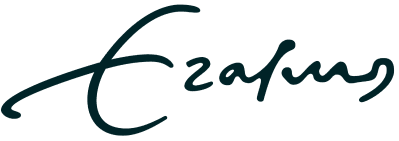About this minor
Want to learn who commits fraud and why? What organizations can do to prevent and detect fraud? How affected organizations deal with crises caused by fraud, and how the legal system responds to fraud?
According to recent estimates, organizations lose about five percent of their revenues to dishonesty from within the firm. Such occupational frauds occur at various organizational levels – from the mailroom to the boardroom. While executives are “cooking” the company’s books to show better profits (e.g., Enron), purchasing agents are getting kickbacks from suppliers and employees embezzle money to improve their lifestyles. In this minor, we learn who commits fraud and why, what organizations and gatekeepers can do to prevent and detect fraud, how affected organizations deal with crises caused by fraud, and how the legal system responds to fraud.
Learning outcomes
- Understand the costs and personal consequences of fraud occurrences and how it affects individuals, consumers, organizations and society at large;
- Reproduce famous fraud schemes in history;
- Understand how pressures, opportunities, and attitudes (the “fraud triangle”) contribute to fraud and identify those;
- Define fraud and distinguish between different types of fraud;
- Recognize who commits fraud and why;
- Identify controls that prevent and detect fraudulent behavior, from the “tone at the top” to security measures on the shop floor;
- Analyze, present and discuss academic articles, which deal with fraud,
- Conduct a basic forensic investigation;
- Obtain a basic understanding of how the legal system deals with occurrences and risks of fraud.
Good to know
The course consists of a mix of lectures, workshops and self-study.
All RSM minors have mandatory attendance
There are no pre-requisites for this course. During the course, I will provide a (short) overview of the most important accounting concepts. For students that never took an accounting course before, and want more background information, I would advise them to read an introductory book about accounting (e.g. “Accounting Made Simple: Accounting Explained in 100 Pages or Less” by Mike Piper, or any other “introduction to accounting” book available at the library).
Teaching method and examination
Teaching methods
Weekly workshops and lectures where we discuss the theory behind fraudulent behavior, real-life fraud cases and academic articles, discussed and presented in student teams.
Teaching materials
- Albrecht, W.S., Albrecht, C.O., Albrecht, C.C., Zimbelman, M.F.: Fraud Examination, 6th edition, Cengage, ISBN: 978-1-337-61967-7
- Business cases (to be announced)
- Academic articles (to be announced)
Method of examination
The final grade consists of the following elements:
- Written test (60%). The final test (open and multiple-choice questions) will cover the material presented and discussed during lectures and workshops and will be based on the textbook and other material used in this course.
- Home assignments: Assignments prepared in student teams (30%). Please adhere to the due dates provided. Submission delay will lead to grade reduction, and assignments submitted after the respective tutorial will receive a ‘fail’.
- Course participation and presentation: Participation during workshops and lectures, quality of presentations and accompanying slides (10%). For each workshop or lecture that a student misses for a non-valid reason, the score on this part of the assessment will be reduced with 2 points (out of a total of 10 points).
o be eligible to obtain a final grade, the grade for the written test needs to be at least 4.5. To pass this course, the final grade for this course has to be at least 5.5.
Composition final grade
- Written closed-book test (60%).
- Assignments prepared in student teams (30%).
- Quality of team presentations and accompanying PowerPoint sheets (10%).
Additional information
- More infoMinorpage on website of Erasmus University Rotterdam
- Contact a coordinator
- CreditsECTS 15
- Levelbachelor
- Selection minorNo
